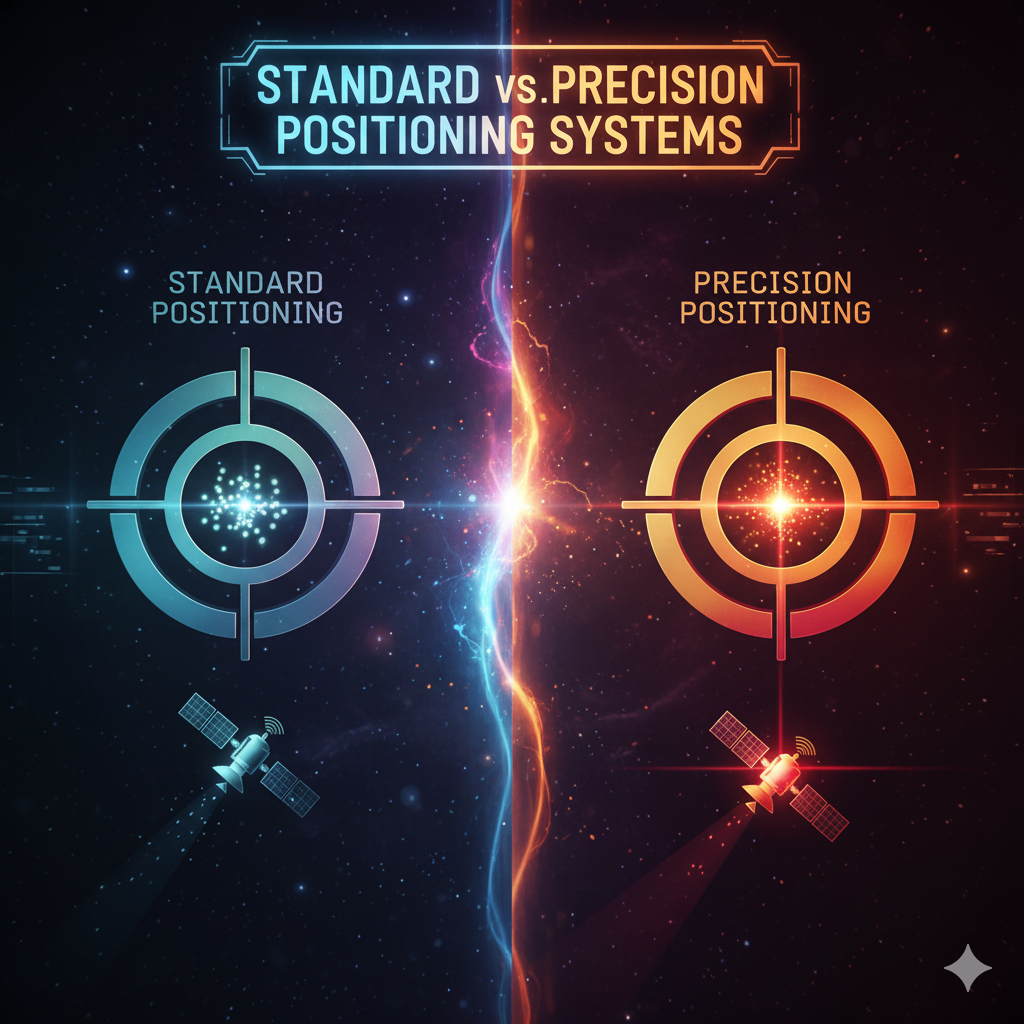Introduction
In the modern world, where every aspect of human life—from transportation to telecommunications, agriculture to defense—is becoming increasingly dependent on location-based data, Global Navigation Satellite Systems (GNSS) have become the backbone of digital infrastructure. The Global Positioning System (GPS), originally developed by the United States, revolutionized global navigation and timing. Today, similar systems like GLONASS (Russia), Galileo (European Union), and BeiDou (China) operate alongside the American GPS, collectively forming a network that enables precise positioning worldwide.
However, reliance on foreign systems poses strategic and security vulnerabilities for nations. Recognizing this, India launched its indigenous navigation system — the Indian Regional Navigation Satellite System (IRNSS), also known as NavIC (Navigation with Indian Constellation). The IRNSS is designed to provide both Standard Positioning Services (SPS) and Precision Positioning Services (PPS) within the Indian subcontinent and up to 1,500 km beyond its borders.
This essay aims to explain the concepts of Standard Positioning Systems and Precision Positioning Systems, explore their significance in the GPS era, and discuss how India’s IRNSS, with just seven satellites, delivers strategic, economic, and technological advantages.
1. The GPS Era: A Revolution in Global Navigation
1.1 Genesis of GPS
The Global Positioning System (GPS) was developed by the United States Department of Defense in the 1970s, primarily for military applications. It became fully operational in the 1990s and later opened for civilian use. GPS operates through a constellation of at least 24 satellites, providing global coverage.
Each GPS satellite continuously transmits signals that contain information about its position and the precise time. A GPS receiver on Earth calculates its position by measuring the time delay between transmission and reception of these signals from multiple satellites.
1.2 Global Navigation Satellite Systems (GNSS)
Today, multiple countries operate their own satellite navigation systems, collectively called GNSS:
- GPS (USA) – The first and most widely used system.
- GLONASS (Russia) – Fully operational global coverage.
- Galileo (EU) – Civilian-operated system with high accuracy.
- BeiDou (China) – Expanding global coverage with 35 satellites.
- IRNSS/NavIC (India) – Regional coverage over South Asia.
These systems provide various levels of positioning accuracy depending on their design, frequency bands, and correction mechanisms.
2. Understanding Standard and Precision Positioning Systems
2.1 Standard Positioning System (SPS)
The Standard Positioning System (SPS) is the open-access service provided to civilian users by most GNSS systems, including GPS and IRNSS. It is designed for general use in activities such as:
- Navigation for vehicles, ships, and aircraft
- Disaster management and search operations
- Surveying and mapping
- Everyday smartphone applications
SPS typically offers an accuracy range of 5 to 10 meters under normal conditions. The data is transmitted through a single frequency band and is intentionally degraded to limit precision (for security reasons in military systems like GPS).
2.2 Precision Positioning System (PPS)
The Precision Positioning System (PPS) is the encrypted, high-accuracy service primarily reserved for military, strategic, and authorized users. It operates on multiple frequencies and employs encrypted signals that prevent spoofing or jamming.
The accuracy of PPS can reach centimeter or decimeter levels, depending on differential correction mechanisms and ground-based augmentation systems. PPS provides:
- Secure communication channels
- Resistance to interference or signal spoofing
- Higher timing and positioning precision
In short, SPS is open and less accurate, while PPS is restricted and highly accurate, serving different user communities under a single satellite navigation framework.
3. Comparison Between SPS and PPS
| Feature | Standard Positioning System (SPS) | Precision Positioning System (PPS) |
|---|---|---|
| Users | Civilian users (open access) | Military, strategic agencies (restricted access) |
| Signal Type | Single frequency, unencrypted | Dual/multi-frequency, encrypted |
| Accuracy | 5–10 meters | Up to centimeters |
| Availability | Global or regional (public) | Restricted (authorized users only) |
| Applications | Navigation, mapping, logistics, agriculture | Defense, missile guidance, secure operations |
| Signal Security | Vulnerable to spoofing/jamming | High-level encryption and authentication |
| Example Systems | GPS (L1 frequency), NavIC SPS | GPS PPS (L2 frequency), NavIC PPS |
4. The Need for an Indigenous Navigation System
For decades, India relied on the U.S.-owned GPS for navigation and timing services. However, this dependence carried geopolitical and strategic risks:
- During the Kargil War (1999), the U.S. reportedly denied India access to precise GPS data, exposing the country’s vulnerability.
- Critical infrastructure like military operations, telecommunications, and banking networks required secure, uninterrupted navigation data.
Therefore, India realized the importance of an independent, reliable, and regionally optimized navigation system — giving birth to the IRNSS (Indian Regional Navigation Satellite System).
5. The Indian Regional Navigation Satellite System (IRNSS / NavIC)
5.1 Overview
The IRNSS, operationally known as NavIC, is India’s autonomous regional satellite navigation system developed by the Indian Space Research Organisation (ISRO). It aims to provide accurate position information to users in India and the surrounding region extending up to 1,500 km beyond its borders.
The system was designed to provide two types of services:
- Standard Positioning Service (SPS) – for all civilian users.
- Restricted Service (RS) – the encrypted service equivalent to PPS, intended for strategic use by authorized agencies.
5.2 Satellite Constellation
IRNSS consists of seven satellites:
- Three in geostationary orbit (GEO) — always above the same location on Earth.
- Four in geosynchronous inclined orbits (GSO) — moving in a figure-eight pattern, ensuring continuous coverage over India.
These satellites transmit signals in L5 and S-band frequencies, providing dual-frequency advantage for accurate and robust positioning.
5.3 Ground Segment
The system’s ground segment comprises:
- IRNSS Spacecraft Control Facility (SCF)
- IRNSS Network Timing Centre (INC)
- Range and Integrity Monitoring Stations (RIMS)
- IRNSS Data Communication Network (IRDCN)
Together, these manage signal integrity, orbit control, and synchronization with atomic clocks.
6. Working Principle of IRNSS
Each IRNSS satellite transmits navigation signals containing:
- Satellite ID and orbital parameters
- Time of transmission
- Navigation message
A NavIC receiver on Earth determines its position by calculating the time delay between signals from multiple satellites. Since IRNSS operates on two frequencies (L5 and S-band), it automatically compensates for ionospheric errors, improving accuracy compared to single-frequency systems like civilian GPS.
The typical accuracy of NavIC:
- SPS: 5–10 meters
- RS (PPS equivalent): 1–2 meters (restricted access)
7. Advantages of IRNSS and NavIC
India’s IRNSS programme, despite being regional and using only seven satellites, offers numerous strategic, economic, scientific, and societal benefits.
7.1 Strategic and Security Advantages
- Autonomy from Foreign Systems:
IRNSS ensures India is no longer dependent on GPS or other foreign navigation systems for critical military or national security operations. - Secure and Encrypted Service:
The Restricted Service (RS) provides encrypted signals that cannot be jammed or spoofed easily, ensuring safe communication during defense missions. - Support for Missile Guidance and Military Operations:
IRNSS data is essential for precision targeting, navigation of fighter aircraft, naval ships, and missile systems such as Agni and BrahMos. - Reliable During Conflicts:
Unlike GPS, which can be denied by its owner nations, IRNSS remains fully operational during geopolitical crises.
7.2 Technological and Scientific Advantages
- Dual-Frequency Operation:
IRNSS uses L5 and S-band frequencies, minimizing ionospheric delay errors and ensuring higher accuracy. - Regional Optimization:
Unlike global systems designed for the entire Earth, IRNSS is optimized for India’s regional geography, providing superior accuracy over the Indian subcontinent. - Integration with GNSS:
NavIC receivers can integrate with GPS, GLONASS, or Galileo signals to enhance reliability and precision. - Indigenous Capability Development:
The development of IRNSS has boosted India’s expertise in satellite engineering, atomic clocks, ground control systems, and navigation algorithms.
7.3 Economic and Civilian Advantages
- Enhanced Transportation and Navigation:
IRNSS aids navigation for road, rail, air, and maritime transport systems, improving efficiency and safety. - Disaster Management and Rescue Operations:
During floods, earthquakes, or cyclones, IRNSS provides real-time location tracking for relief and rescue teams. - Agriculture and Resource Management:
Precision agriculture benefits from accurate field mapping and soil monitoring using NavIC-enabled devices. - Telecommunications and Banking:
Accurate time synchronization from IRNSS improves performance in telecom networks, stock exchanges, and ATM systems. - Commercial and Consumer Electronics:
The Indian government has mandated that NavIC compatibility be integrated into smartphones and vehicles, boosting domestic industries.
7.4 Socioeconomic and Strategic Independence
- Reducing Foreign Dependence:
India saves significant costs by avoiding dependency on foreign GNSS data services. - Boost to Make in India:
Encourages domestic manufacturing of NavIC-based chips, receivers, and navigation equipment, aligning with India’s self-reliance goals. - Soft Power and Global Recognition:
IRNSS establishes India as one of the few nations with indigenous satellite navigation capability, strengthening its technological and diplomatic stature.
8. Why Only Seven Satellites Are Enough
Unlike global systems requiring 24 or more satellites, IRNSS achieves regional coverage with just seven because of its strategic orbital configuration.
8.1 Geostationary and Geosynchronous Combination
- The three geostationary satellites continuously cover the same area above India.
- The four geosynchronous satellites, inclined at 29°, cover the rest of the region, ensuring continuous visibility from any point in India.
This efficient design enables 24×7 signal availability across the entire subcontinent without the need for global coverage.
8.2 Cost and Resource Efficiency
With seven satellites instead of 30+, India:
- Saves launch and maintenance costs.
- Focuses its resources on regional precision rather than global reach.
- Reduces latency and complexity in signal transmission.
9. Applications of IRNSS/NavIC
9.1 Civilian Applications
- Vehicle Tracking: Monitoring logistics, fleet management, and public transport.
- Fishermen Assistance: Providing navigation and distress alert services in coastal waters.
- Surveying and Mapping: High-accuracy geospatial data for infrastructure planning.
- Disaster Management: Real-time alerts and coordination for disaster relief.
- Telecom and Power Grid: Synchronization of critical infrastructure operations.
- Personal Navigation Devices: Smartwatches, smartphones, and vehicle GPS systems.
9.2 Military and Strategic Applications
- Weapon and Missile Guidance: Ensures accuracy in long-range strike systems.
- Troop and Asset Movement: Real-time tracking of military convoys.
- Border Surveillance: Integration with drones and surveillance systems for real-time positioning.
- Secure Communication: Reliable navigation even under GPS-denied conditions.
10. IRNSS in Comparison with Other Navigation Systems
| Parameter | GPS (USA) | GLONASS (Russia) | Galileo (EU) | BeiDou (China) | IRNSS/NavIC (India) |
|---|---|---|---|---|---|
| Coverage | Global | Global | Global | Global | Regional (India + 1500 km) |
| Satellites | 31 | 24 | 30 | 35 | 7 |
| Accuracy | 5 m (civilian) | 5 m | 1 m (with correction) | 10 m | 5 m (SPS), 1–2 m (RS) |
| Owner | USA | Russia | EU | China | India |
| Civil Signal | Open | Open | Open | Open | Open |
| Military Signal | Encrypted | Encrypted | Encrypted | Encrypted | Encrypted |
| Primary Frequency | L1, L2 | L1, L2 | E1, E5 | B1, B2 | L5, S-band |
IRNSS holds its own in regional accuracy and reliability despite its smaller scale, reflecting India’s efficient design and strategic focus.
11. Challenges and Future Prospects
11.1 Challenges
- Limited Coverage:
IRNSS is regional and does not provide global navigation support, unlike GPS or Galileo. - Device Compatibility:
Many smartphones and navigation devices initially lacked NavIC support, limiting its early adoption. - Maintenance and Upgrades:
Ensuring long-term performance requires periodic satellite replacement and ground system upgrades. - Awareness and Commercialization:
Awareness among industries and users about NavIC’s benefits is still growing.
11.2 Future Prospects
- IRNSS Expansion:
ISRO plans to expand the NavIC constellation to 11 satellites for enhanced coverage and reliability. - Integration with 5G and IoT:
NavIC will play a crucial role in 5G synchronization, autonomous vehicles, and Internet of Things (IoT) applications. - Global Recognition:
India is working with ITU and UN agencies for international acceptance of NavIC as part of the global GNSS framework. - Upgraded Satellites with Atomic Clocks:
Future IRNSS satellites will carry improved rubidium atomic clocks for higher timing precision.
12. Strategic and Geopolitical Significance
In the 21st century, space and navigation capabilities define a nation’s technological sovereignty. IRNSS gives India:
- Independence from Western systems during conflicts.
- Regional influence across South Asia and the Indian Ocean.
- Enhanced defense capabilities through secure and accurate navigation.
- Leverage in space diplomacy, showcasing India’s growing self-reliance under the “Atmanirbhar Bharat” initiative.
Conclusion
The distinction between Standard Positioning Systems (SPS) and Precision Positioning Systems (PPS) lies at the heart of modern navigation technology. SPS serves the general public with open access, while PPS empowers militaries and strategic sectors with secure, high-accuracy data.
In this context, India’s IRNSS (NavIC) stands as a remarkable achievement — a testament to the nation’s determination to safeguard its autonomy, security, and technological future. With only seven satellites, IRNSS provides reliable, dual-frequency coverage across the Indian subcontinent, serving both civilian and strategic needs.
The system embodies India’s scientific ingenuity, strategic foresight, and vision for self-reliance in space technology. As IRNSS evolves, it promises to strengthen India’s position not only in regional navigation but also in global space governance. In the GPS-dominated world, NavIC symbolizes India’s capability to chart its own course in the navigation domain — secure, independent, and future-ready.
Summary of Key Points
| Aspect | Details |
|---|---|
| SPS | Open-access service for civilians; 5–10 m accuracy |
| PPS (RS) | Encrypted, military-grade service; 1–2 m accuracy |
| IRNSS / NavIC | India’s regional navigation system with 7 satellites |
| Coverage | India and 1500 km beyond borders |
| Advantages | Strategic autonomy, precision navigation, disaster management, economic growth |
| Frequencies Used | L5 and S-band |
| Key Benefit | Independent, reliable, dual-frequency regional navigation |
| Future Scope | Integration with 5G, expansion to 11 satellites, global acceptance |




